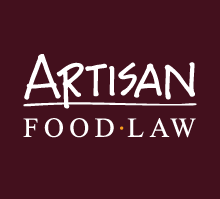Fruit juices – new rules on composition and labelling
The regulation of fruit juices and similar products is governed by EC Directive 2001/112 which in England is implemented by the Fruit Juice and Fruit Nectars (England) Regulations 2003 (similar provision exists for Scotland, Wales and Ireland) but on 14 December 2011 the European Parliament approved a proposed directive amending Directive 2001/112. The Council need only rubber stamp this proposal for it to become law when published in the Official Journal.
The 2003 Regulations lay down compositional standards for fruit juice and some similar products, and specify the descriptions which may be used for fruit juice, juice from concentrate, concentrated fruit juice, dehydrated or powdered fruit juice and fruit nectar. The label must indicate when a juice is obtained directly from fruit, from concentrate and, in the case of fruit nectar, when it is obtained wholly or partly from a concentrated product or a dehydrated/powdered fruit juice. The proposed amendments to Directive 2001/112 mean that a number of changes to the 2003 Regulations will be required, including:
- Where a product is made from two or more fruits, except where lemon and/or lime juice (now permitted) are used to regulate acidic taste, the product name must be composed of a list of the fruits used, in descending order of volume, as indicated in the list of ingredients. In the case of products made from three or more fruits, the words ‘several fruits’ or a similar wording, or the number of fruits used may be stated.
- A claim that sugars have not been added to fruit nectar and any claim to the same effect may only be made where the product does not contain any added mono- or disaccharides or any other food used for its sweetening properties. If sugars are naturally present in fruit nectar, the label must state ‘contains naturally occurring sugars’.
- Sugars are removed from the list of authorised ingredients, although sugars and honey are still permitted ingredients in fruit nectars.
- Tomatoes are included in the list of fruits which may be used for fruit juice.
- A new class of product is included and described as ‘water extracted fruit juice’ obtained by diffusion with water of pulpy whole fruit whose juice cannot be extracted by physical means or dehydrated whole fruit.
The amendment of the 2003 Regulations is required to be made within 18 months of the new directive becoming law. Transitional arrangements will provide that products placed on the market or labelled within 18 months of the directive becoming law may continue to be marketed for a further 18 months.





